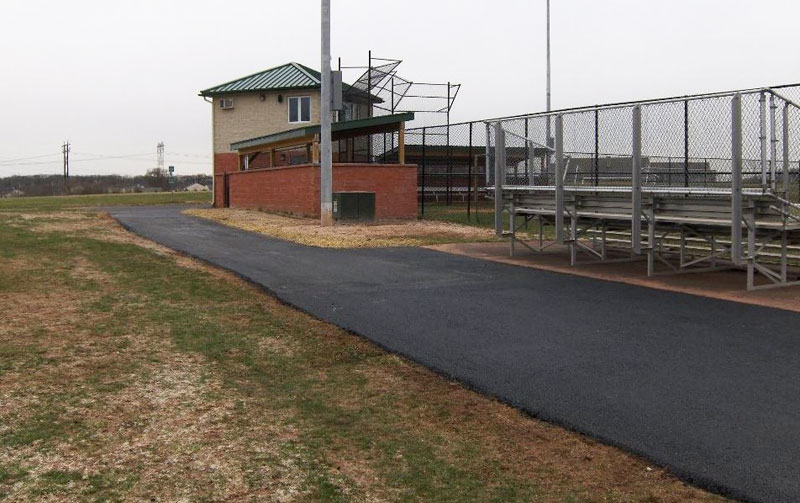A1 Professional Asphalt & Sealing Llc Can Be Fun For Anyone
Table of ContentsA1 Professional Asphalt & Sealing Llc for BeginnersTop Guidelines Of A1 Professional Asphalt & Sealing LlcWhat Does A1 Professional Asphalt & Sealing Llc Mean?The Ultimate Guide To A1 Professional Asphalt & Sealing LlcAn Unbiased View of A1 Professional Asphalt & Sealing Llc

The oil in an automobile engine is not just oil. It contains a range of additives to boost the car's efficiency. These consist of polymers, viscosity modifiers, warmth stabilizers, additional lubricating substances, and put on additives. The REOB contains all the ingredients that were in the waste oil in addition to the wear metals from the engine (mainly iron and copper).
Nevertheless, by making several blends utilizing different REOB examples and various asphalt binders, the variants mostly can be averaged out. Numerous States offered examples of recognized REOB composition to TFHRC scientists, who examined the samples to contrast the percentage of added (understood) REOB to the discovered (examined) quantity. The evaluations showed a comparable portion of included and found REOB.
A1 Professional Asphalt & Sealing Llc for Dummies
None of those States recognized that the asphalt they were getting consisted of REOB. One State insisted its samples had no REOB - https://telegra.ph/A1-Professional-Asphalt--Sealing-LLC-Expert-Asphalt-Repairs-04-20.
Of the 1,532 samples evaluated, 12 percent included REOB, and some consisted of substantially high degrees of it at 1020 percent. The highest degree was 34 percent in an example from Texas, which TxDOT had actually used in a patching compound. This screening also disclosed the visibility of phosphoric acid in 11 percent of the samples, and 2 percent included ground tire rubber.
Two years ago at TRB's yearly meeting, the Federal researchers held an REOB workshop and offered the searchings for of their laboratory examinations to a standing room-only crowd. Some companies do not especially prohibit REOB, they do impose physical examinations that prevent its useeffectively a ban. Others do not prohibit it by spec, but have contracts with asphalt distributors to prevent the use of REOB
More About A1 Professional Asphalt & Sealing Llc
A handful do enable REOB, some within particular limitations. Ohio and Texas limit degrees to less than 5 percent of the asphalt. To develop a dependable examination method that all States can use, the TFHRC researchers established a round-robin test plan. The participants are 11 State freeway firms (Illinois, Massachusetts, Minnesota, Mississippi, Montana, North Carolina, Oklahoma, South Carolina, Texas, Vermont, and Wyoming), 2 independent testing laboratories, the Ministry of More Info Transport in Ontario, Queen's University in Ontario, and an Ontario paving professional.
In total amount, the researchers prepared and shipped 720 blends. The individuals are examining the samples separately using the guidelines offered by the TFHRC researchers. The round-robin screening is almost completed, and TFHRC is in the procedure of collecting the outcomes. The outcome will be a recommended AASHTO examination method that any kind of State can take on and use (diagonal parking vs straight parking).
The sidewalk with REOB, which lies 0.6 mile (1 kilometer) from the sidewalk without REOB, has similar subgrade, traffic density, and environment. The segment of Highway655 with 5 to 10 percent REOB revealed substantial fracturing. In this instance, the visibility of REOB was the identified cause of fracturing at a low temperature levels.
A section of test sidewalk in Minnesota (MN1-4) found to contain REOB likewise broke prematurely. The pavement performed well for the initial 3 to 4 years, however then began to split.
Everything about A1 Professional Asphalt & Sealing Llc
The examinations were not extensive, yet they showed that at levels of 6 percent or even more, the tensile strength of the asphalt went down dramatically. At a degree of 3.5 percent REOB, the variant in the physical test approaches was more than the effect of REOB. Actually, it was hard for scientists to examine whether REOB existed.

One binder specification thought about is the distinction between the reduced temperature critical specification temperature for tightness (S) in the bending light beam rheometer and the flexing light beam rheometer creep incline (m-value) noted as Tcritical. Two independent study groups, one from AASHTO and the various other from the Asphalt Institute, concluded that more research study is needed on the usage of REOB in asphalt.
Previously, all asphalt screening determined engineering homes such as stiffness. These tests do disappoint what materials had actually been included in the asphalt. One sample gotten throughout the TFHRC research had an extremely odd analysis. The example had the complying with examination outcomes: Superpave PG 64-28 with a high temperature grade of 67.3 Tcritical on the flexing beam rheometer was 6.7 degrees Celsius.

The 8-Minute Rule for A1 Professional Asphalt & Sealing Llc
These outcomes show there are weaknesses in the standardized engineering screening protocols that might be manipulated. The manufacturer may have a financial advantage and the product passes all the standard tests, however the product may not be helpful to guaranteeing long-term performance. To address this concern and the expansion of brand-new asphalt ingredients and extenders, TFHRC is starting a research study program to utilize handheld spectroscopic devices, x-ray fluorescence spectroscopy, and Fourier change infrared spectroscopy to enable analyses to be performed in the field as opposed to having to take examples back to the laboratory.